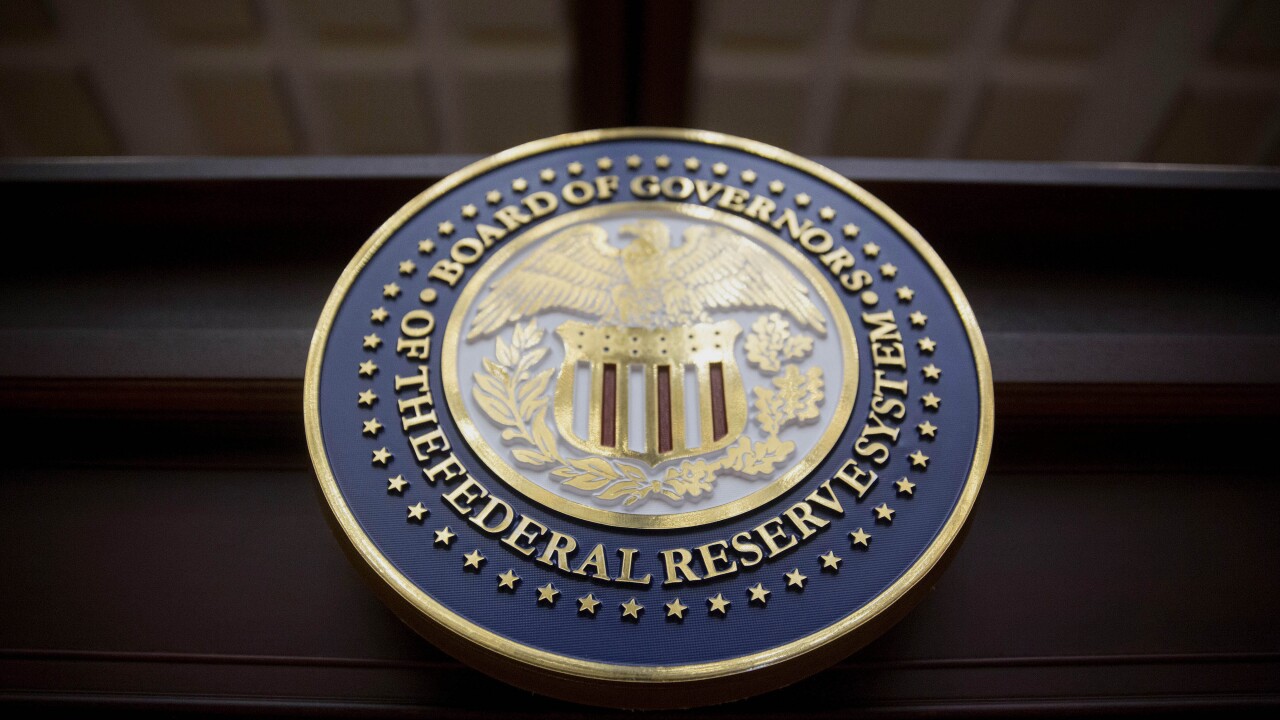
Stress-test reform is almost certainly coming. But the annual regulatory exams, which measure how well-prepared banks are for economic shocks, are still more of a black box than the industry would prefer.
So there will be some uncertainty when the Federal Reserve releases this year's results on Friday at 4:30 p.m. Eastern time. The stress-tested banks are expected to release their own updates, including any changes to their capital distribution plans, next week.
Last year's results were
"I think the overriding message is that I hope that this will be a more constructive year," Scott Siefers, an analyst at Piper Sandler, told American Banker. "And as the group's narrative increasingly relies on this notion of regulatory rationalization, this should be just one more mile marker on a path toward a constructive destination for the group."
Here's a rundown of key questions and answers ahead of this year's stress-test results.
Which banks are participating?
This year, 22 financial institutions will be subject to the Fed's assessment, compared with 32 last year.
Banks with more than $250 billion of assets participate annually. But every other year, those with between $100 billion and $250 billion of assets
M&T has been opting into the tests annually in an effort to reduce its stress capital buffer, as it cuts down its commercial real estate concentration and posts improving earnings, the Piper Sandler analysts said. Last year, the Buffalo, New York-based bank's stress capital buffer requirement went down by 20 basis points, to 3.8%.
The other 20 participating banks are American Express, Bank of America, BNY Mellon, Barclays US, BMO Financial, Capital One Financial, Charles Schwab, Citigroup, Deutsche Bank USA, Goldman Sachs, JPMorganChase, Morgan Stanley, Northern Trust, PNC Financial Services Group, State Street, TD Group US Holdings, Truist Financial, UBS Americas,
How does this year's doomsday scenario compare with 2024's?
The Fed's "severely adverse" scenario, which tests the strength of banks' capital cushions, isn't as negative as last year's.
"It looks like a more benign scenario than we had last year," Siefers said. "So, in a perfect world, we should see lower SCBs relative to last year, which ended up being one of the more disappointing annual situations we had."
The Fed's severely adverse scenario models for the U.S. unemployment rate peaked at 10%, similar to what was envisioned in 2024, but with less of a GDP decline and a softer uptick in inflation. Additionally, Treasury yields are projected to settle at a higher level under this year's scenario. Equity prices and home prices are not modeled to decline as sharply.
Commercial real estate risk, which was a major point of concern for regulators last year, is also starting to fall out of the spotlight. The Fed's most extreme test models for CRE property values are expected to nosedive by 30%, but that drop marks an improvement from the 40% decline in the 2024 scenario.
Can we guess how individual banks will fare?
Most analysts are predicting that the yearly exams won't hit banks' stress capital buffers as heavily as they did last year. Still, Siefers said it's impossible to project exactly how the cards will fall.
"Ever since the SCB framework was incorporated into this annual ritual, I think investors have attuned themselves to the idea that there are simply going to be surprises every year," he said. "We can model to the best of our ability. And I think we all have broad directional senses for whose results should be maybe a little better or a little worse than last year."
But every year,
"I think we've characterized
Last year, Wells had to increase its stress capital buffer by 90 basis points, to 3.8%, compared with a median of 3.6% among the top-four megabanks.
This year, Piper Sandler modeled for Wells' stress capital buffer to fall by 50 to 80 basis points, and for
How are the stress tests likely to impact banks' dividends and share repurchases?
The stress-test results typically matter to banks and their shareholders mainly because they impact banks' plans for their capital.
So one big question is: Will the results prevent individual banks from returning as much capital to shareholders — in the form of dividends and stock buybacks — as they'd prefer?
Analysts are generally upbeat about the outlook in that regard.
"We expect dividends to increase at most, but not all, of our banks post-stress tests due to likely continued growth in earnings," Vivek Juneja, an analyst at JPMorgan Securities, wrote in a research note.
He added that share buybacks are likely over the next 12 months, but to widely varying degrees at different banks.
Meanwhile, Jefferies analysts wrote in a June 10 research note that expectations for share repurchases have been rising.
"Bank capital ratios are at the highest they've been in years, providing flexibility in an uncertain environment," the Jefferies analysts wrote.
What changes to the stress-testing process are under consideration?
During the early months of the Trump administration, bank regulators worked to usher in a new stress-testing program.
In April, the Fed
Then this month, the Fed's newly minted vice chair for supervision, Michelle Bowman,
"I welcome the opportunity to consider a broader range of perspectives as we look to the future of capital framework reforms," Bowman said at the time.
Some of the potential changes include stress testing less frequently,
The industry is optimistic that additional transparency will come. The question now is when, Siefers said. He thinks banks are most hopeful for insight into the Fed's analysis on peak-to-trough losses, pre-provision net revenue degradation and other company-specific stats that determine their capital requirements.
"In other words, something that can give them some ammunition to understand exactly how they're being graded and why," Siefers said.
While the Fed has promised changes to the tests,






